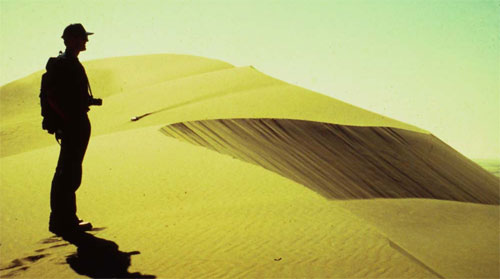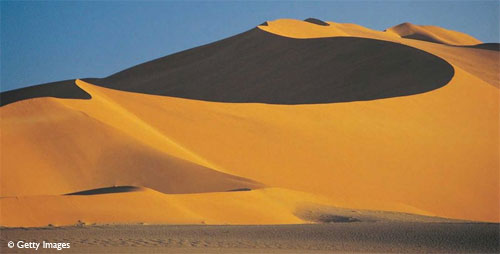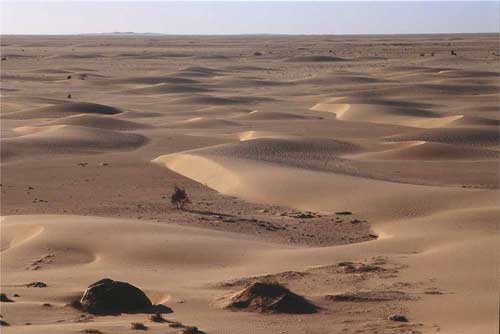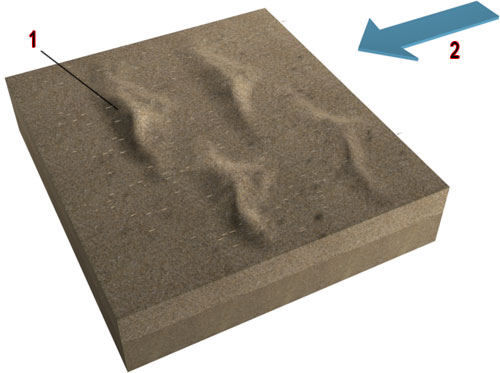Dunes
Wind blows sand into ripples and dunes. Ripples are low ridges of sand. They are usually only a few centimetres high. The ridge crests may be straight or wavy.
Dunes are much larger. Some dunes can grow up to 400 m (1300 feet) high. There are many different shapes of dunes.
Wind carries and bounces sand grains over the ground surface. Small depressions or obstacles slow the wind down and it drops its load of sand. The growing mound forms a bigger and bigger barrier to the wind. Over time a crest develops at the top of the mound. Eventually the crest collapses and sand grains fall down a slipface.

Click to view larger and see the legend.
Diagram showing how dunes form.
- Wind
- Sand
- Slip face
- Wind
- Sand eroded here
- Sand deposited here in calm air
Types of dunes
« Back 















